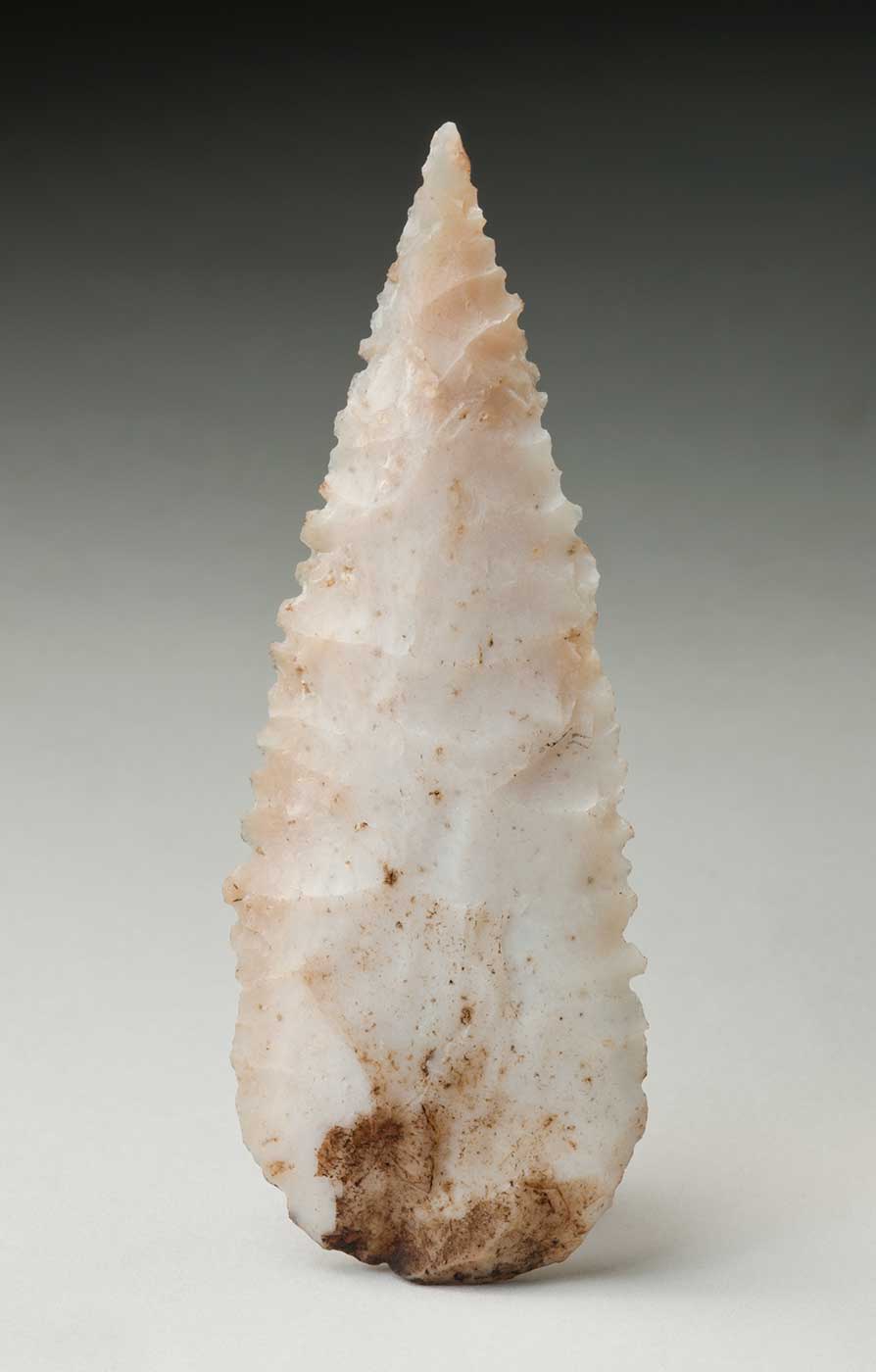Kimberley point spearhead
This arrow-like Kimberley point spearhead is part of a long tradition in the Kimberley region of Western Australia.

- Download Kimberley point spearhead study608.9 kb pdf [ PDF | 608.9 kb ]
Print this page on A3 paper for best results
Cultural history
The cultural history of the Kimberley goes back more than 40,000 years. It is rich in ancient stories, rock art and traditions unique to the region.
Stone spearheads in the form of an arrow-like point have a long tradition in the Kimberley. Following European contact, Aboriginal people began to produce points made from glass, ceramics and porcelain.
Trade
The combination of skilled and intricate workmanship and new materials of varying colours, textures and translucencies, produced spearheads of great beauty.
These valued objects were traded within the Kimberley and further afield for items such as metal, which was a sought after material.
Collection
This spearhead was collected in the first half of the 20th century by Keith Goddard, whose family were keen collectors of Indigenous artefacts.
Keith served in the First World War and saw action in Gallipoli. In 1926, he moved to northern Australia and worked as a manager on various pastoral stations, including Nicholson Station in the east Kimberley.
Questions
How does the design and shape of this Kimberley point relate to its function as a tool?
Why would so much time have been invested in making a Kimberley point?
What do the different materials that were used to create Kimberley points before and after European contact reveal about the effects of colonisation on Indigenous communities? What do the changes reveal about the continuity of Aboriginal culture?